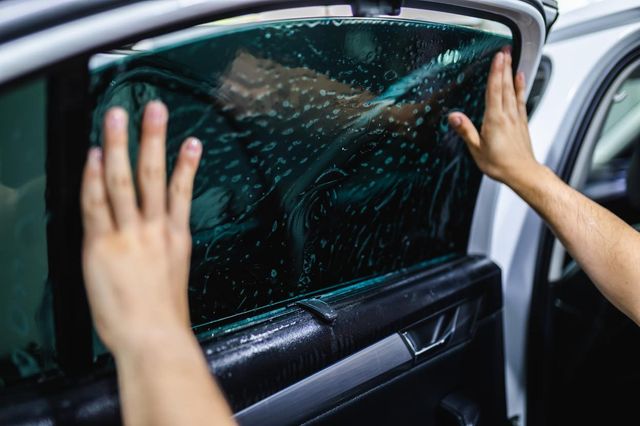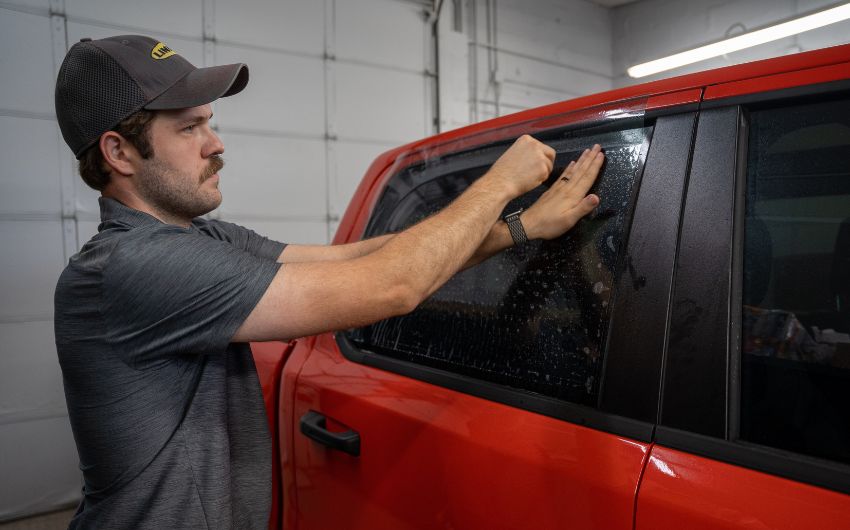Vehicle Window Tinting: Improve Convenience and Lower Glare While Driving
Home Window Tinting Laws and Standards: What You Required to Know Before Tinting Your Automobile
Before continuing with window tinting for your lorry, it is necessary to familiarize yourself with the varied laws and guidelines that control this method throughout different states. These policies determine the permissible levels of color darkness, often determined by noticeable light transmission (VLT) percentages, and include details stipulations for front windshields intended at making certain road safety.
Introduction of Home Window Tinting Laws
Window tinting legislations are regularly subject to variation throughout various territories, reflecting regional guidelines and safety and security considerations. These legislations determine the permitted degrees of tint darkness and reflectiveness on vehicle windows, making sure that vehicle drivers keep ample exposure while also protecting against dangerous UV rays and warmth.
The majority of laws categorize home window tinting based upon the Visible Light Transmission (VLT) percent, which suggests the quantity of light that can go through the home window. Normally, reduced VLT portions symbolize darker colors. Laws typically separate in between the front, side, and rear windows, with stricter limitations put on the front windscreen to boost safety and security for both the vehicle driver and various other roadway individuals.
Furthermore, some jurisdictions impose constraints on the reflectivity of the color, stopping extreme glare that could impair presence. Exemptions to these legislations may exist for individuals with specific clinical problems requiring additional sunlight security. Compliance with home window tinting laws is critical, as offenses can lead to fines, mandatory removal of the tint, and prospective rises in insurance costs. It is essential for vehicle proprietors to familiarize themselves with neighborhood legislations prior to proceeding with home window tinting setups.
State-by-State Tint Rules
Understanding the certain window tinting guidelines in each state is vital for automobile proprietors seeking to follow the law. Each state in the united state has actually established its own collection of rules regulating home window tinting, which can vary considerably. These guidelines usually dictate the allowable levels of color darkness, the sorts of windows that can be tinted, and any type of medical exemptions that may use.
For instance, states like California have strict constraints on color darkness for front windows, while others, such as New Mexico, may enable darker colors. Additionally, certain states mandate certain presence percentages for numerous windows, including the windshield, front side windows, and back home windows. It is crucial for automobile proprietors to acquaint themselves with their state's regulations to stay clear of potential fines or penalties.
Furthermore, some states may need a qualification sticker label to be positioned on colored home windows, indicating compliance with state laws. Failure to abide by these policies not only runs the risk of legal consequences however can also impact security and visibility while driving. Car owners should perform extensive study or seek advice from neighborhood authorities to guarantee complete understanding and compliance with state-by-state tint regulations.
Allowed Tint Levels and Types
Several lorry proprietors might be shocked to discover that enabled tint degrees and kinds vary widely throughout various states. Each state has established its very own guidelines concerning the acceptable darkness and reflectivity of window color, commonly determined by Visible Light Transmission (VLT) percentages. VLT describes the amount of light that can travel through the colored windows; thus, a reduced portion shows a darker color.

Furthermore, the sorts of color materials allowed can differ, with some states forbiding metallic or mirror-like coatings. It is vital for car owners to acquaint themselves with their state's particular laws to make certain conformity. Non-compliance can result in penalties, compulsory removal of the color, or various other legal effects, making it necessary to comprehend these regulations before proceeding with installment.
Medical Exemptions for Tinting
While not all states give allowances for clinical exemptions pertaining to window tinting, those that do identify the necessity for details individuals to boost visibility and convenience as a result of medical problems. Different clinical problems, such as lupus, skin cancer, and particular eye disorders, can provide individuals specifically conscious sunshine. Consequently, these people might need darker colors to protect themselves from unsafe UV rays and glare.

It is necessary to note that also with a medical exemption, there might still be constraints on the level of color allowed. Compliance with state regulations makes certain that people are both protected and within legal restrictions. Those considering clinical exceptions need to call their regional Department of Electric motor Automobiles or equal authority to comprehend the demands and procedures needed to look for an exemption properly.
Charges for Non-Compliance
Failing this page to adhere to window tinting laws can cause substantial charges, which differ by state. Police are encouraged to release citations for automobiles that do not follow the defined tinting regulations. These fines commonly consist of fines, which can range from small amounts to several hundred dollars, relying on the seriousness of the offense and the state concerned.
In some territories, duplicated offenses may lead to escalating penalties or additional charges, such as required court appearances. Non-compliance might demand the removal of unlawful tinting, typically at the proprietor's expense. In extreme instances, habitual wrongdoers might deal with suspension of their automobile registration till compliance is accomplished.
Furthermore, insurance policy ramifications might occur from receiving multiple citations for window color violations. Insurance companies may check out such violations as an indication of riskier habits, potentially visit homepage causing raised costs or trouble in insurance coverage.
To prevent these charges, it is important for automobile owners to familiarize themselves with their neighborhood home window tinting laws and ensure that their lorry complies (Window Tinting). This aggressive method not only stays clear of legal ramifications yet likewise promotes roadway safety
Conclusion

The majority of guidelines classify home window tinting based on the Visible Light Transmission (VLT) percent, which shows the amount of light that can pass via the home window. Conformity with window tinting guidelines is essential, as infractions can result in fines, mandatory removal of the tint, and possible boosts in insurance premiums.Understanding the particular window tinting policies in each state is vital for lorry owners looking for to abide with the regulation. Read Full Report These laws typically dictate the allowed degrees of tint darkness, the types of windows that can be tinted, and any type of clinical exceptions that might use.
For circumstances, states like The golden state have strict limitations on color darkness for front home windows, while others, such as New Mexico, might enable darker colors.